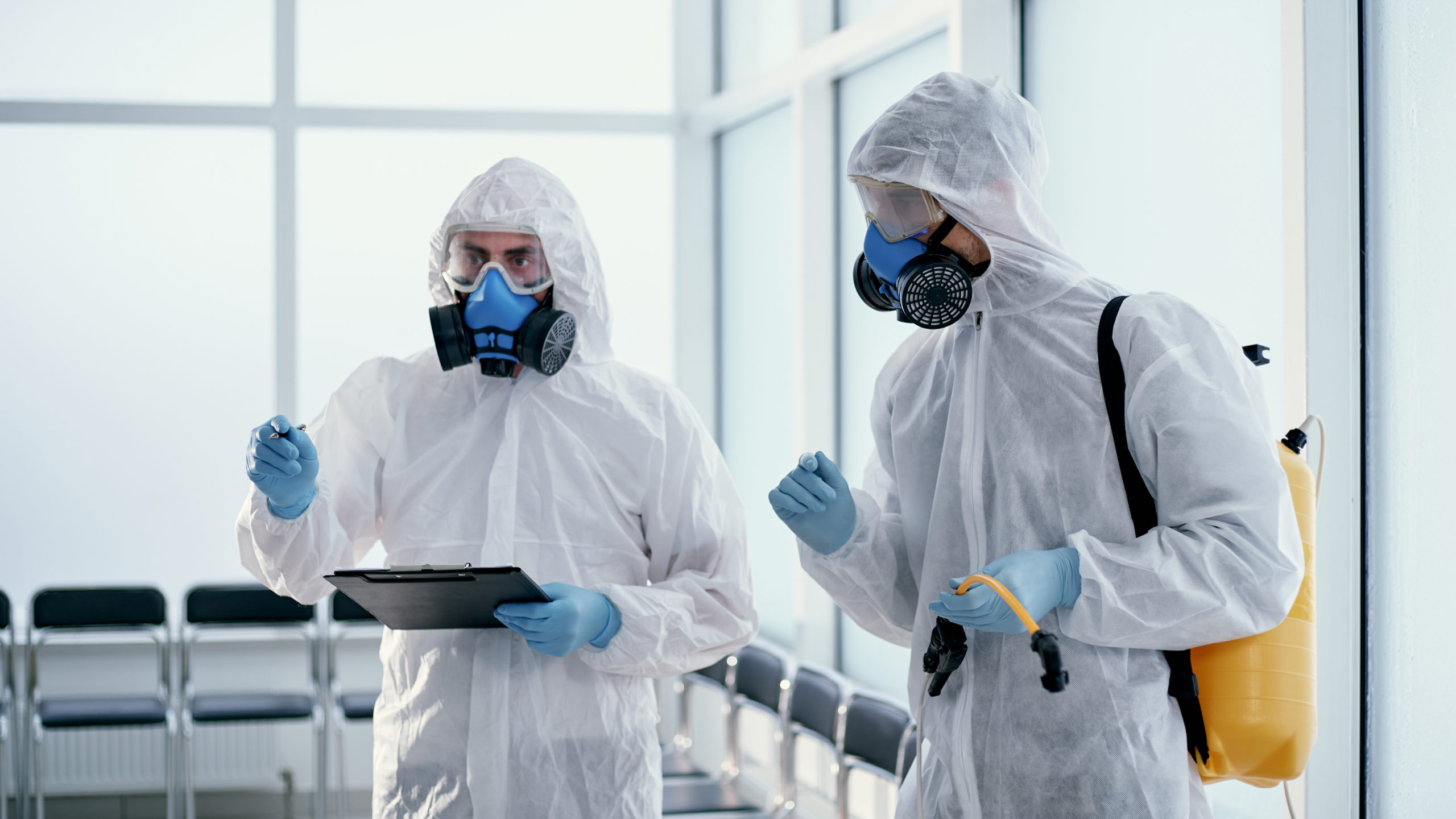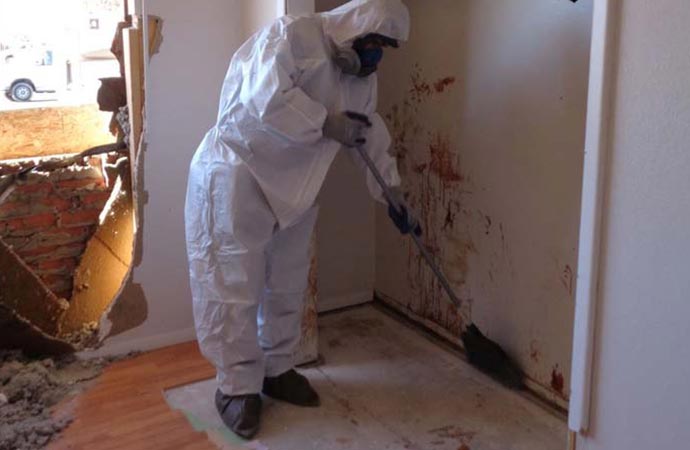Clandestine Lab Cleanup: Comprehensive Purification for Hazardous Sites
Clandestine Lab Cleanup: Comprehensive Purification for Hazardous Sites
Blog Article
Specialist Biohazard Cleansing and Purification for Blood, Bodily Fluids, and Hazardous Materials
In the realm of biohazard cleansing and decontamination for blood, bodily fluids, and harmful materials, accuracy and proficiency are vital. The possible health and wellness risks linked with exposure to biohazards emphasize the crucial requirement for careful handling and thorough clean-up. Specialized training furnishes specialists with the expertise and abilities essential to resolve these dangerous circumstances efficiently. Nonetheless, it is not simply regarding tidying up; the importance of utilizing appropriate decontamination techniques can not be overstated. As we navigate the complex landscape of biohazard cleaning, comprehending the nuances of regulations, compliance, and the specific tools at play becomes critical in making certain a safe and extensive decontamination procedure.
Wellness Risks of Biohazard Exposure
Direct exposure to biohazards postures substantial health and wellness dangers that can result in severe consequences for communities and individuals alike. Biohazards include a large array of organic compounds, including blood, physical liquids, mold, microorganisms, infections, and other possibly transmittable products. When individuals enter contact with these biohazards, whether through mishaps, improper handling, or environmental exposure, they face the risk of having major health problems or diseases.
One of the main wellness dangers connected with biohazard direct exposure is the transmission of transmittable conditions. Bloodborne pathogens such as HIV, hepatitis B and C, and different germs can be existing in biohazardous products, posing a straight hazard to human wellness. Breathing in airborne biohazards like mold and mildew spores or entering into contact with contaminated surface areas can also cause respiratory issues, allergic reactions, and various other adverse wellness results.
Moreover, biohazard exposure can have long-lasting health effects, with some diseases manifesting years after the first call (Blood Cleanup). Therefore, it is critical to prioritize appropriate biohazard cleaning and purification to minimize these health threats and make sure the safety and security of people and communities

Specialized Training for Biohazard Clean-up
When it concerns dealing with biohazard cleaning efficiently and securely, specialized training plays a fundamental role in making certain correct purification procedures are complied with. Biohazard clean-up needs details understanding and abilities to effectively minimize risks associated with bloodborne pathogens, bodily liquids, and hazardous materials. Professionals educated in biohazard cleaning go through extensive instruction on just how to securely deal with, remove, and throw away biohazardous materials to protect against contamination and direct exposure.
Specialized training for biohazard cleanup covers a variety of important subjects, consisting of correct personal protective devices (PPE) use, bloodborne pathogen recognition, purification methods, and harmful waste disposal protocols. People learnt biohazard cleaning are furnished with the essential proficiency to analyze contamination levels, determine prospective threats, and carry out suitable cleaning procedures in compliance with regulative standards.
Constant training and education and learning are extremely important in the field of biohazard cleanup to stay updated on the most current purification innovations, security protocols, and regulations. By spending in specialized training, biohazard clean-up experts can properly reply to emergency cleaning situations and secure both public health and wellness and the environment.
Relevance of Proper Decontamination Strategies
Making use of appropriate purification methods is important in biohazard clean-up to properly decrease and remove dangerous materials health and wellness dangers. Reliable decontamination not just ensures the removal of noticeable traces of blood, bodily this contact form fluids, and other biohazards however also targets unnoticeable virus that may pose severe health and wellness dangers otherwise correctly gotten rid of. By complying with strict purification methods, educated professionals can significantly minimize the danger of direct exposure to unsafe microorganisms, infections, and microorganisms that might lead to diseases or infections.
Appropriate purification methods entail making use of customized tools and disinfectants that are particularly created to reduce the effects of biohazards efficiently. Complete cleaning and disinfection of polluted areas are necessary to protect against the spread of virus and make sure a safe setting for occupants. Additionally, the right disposal of biohazardous waste complying with decontamination procedures is essential in stopping contamination of various other surface areas or people.

Devices and Devices for Safe Clean-up
The appropriate tools and tools play a crucial role in ensuring the risk-free and reliable clean-up of biohazardous materials. When dealing with blood, physical fluids, or unsafe products, biohazard cleaning specialists count on specialized equipment to minimize direct exposure risks and thoroughly decontaminate the affected location. Individual protective tools (PPE) such as handwear covers, goggles, coveralls, and masks are necessary to safeguard against direct contact with possibly contagious products. Additionally, biohazard cleansing sets consisting of disinfectants, absorbing materials, and biohazard bags are made use of to securely have and get rid of of polluted items. Blood Cleanup.
Advanced cleansing tools like hospital-grade anti-bacterials, HEPA-filtered vacuum cleaners, and misting makers are used to sanitize surfaces and remove biohazards effectively. Specialized equipment such as sharps containers and biohazard garbage disposal bins are made use of to safely manage sharp items and biohazardous waste materials. By using the best tools and devices, biohazard cleansing professionals can make certain an extensive cleaning procedure that prioritizes safety and lessens health and wellness risks for both employees and occupants of the affected space.
Rules and Compliance in Biohazard Cleaning
Correct adherence to policies and conformity requirements is critical in biohazard cleansing to make sure the safety of both employees and the setting. Government agencies such as OSHA crime scene cleanup income (Occupational Security and Health And Wellness Management) and the EPA (Environmental Protection Agency) have actually developed particular standards for biohazard cleaning treatments to lessen health risks and ecological contamination. These regulations cover a range of facets consisting of the handling, transportation, and disposal of biohazardous products, along with the necessary training and safety devices needed for personnel involved in the cleaning process.
Biohazard cleansing firms should stay current with these policies to ensure that their procedures fulfill the called for safety standards. Failure to adhere to these laws can result in extreme effects, consisting address of fines, lawful action, and threatening the health of individuals and the setting. By following rigorous regulations and compliance steps, biohazard cleansing business can effectively reduce risks and make certain a comprehensive and risk-free cleanup procedure for all parties entailed.
Verdict
To conclude, biohazard cleansing and decontamination require specific training, correct techniques, and adherence to guidelines. Direct exposure to blood, physical liquids, and dangerous materials presents substantial wellness dangers, making it essential to use the best tools and devices for risk-free cleaning. By adhering to strict protocols and standards, professionals can successfully reduce the risks related to biohazard direct exposure and ensure the safety and security of both themselves and others.
As we navigate the complex landscape of biohazard cleanup, comprehending the nuances of guidelines, conformity, and the specific equipment at play ends up being important in ensuring a risk-free and thorough decontamination process. (Blood Cleanup)
When it comes to taking care of biohazard cleaning successfully and safely, specialized training plays an essential function in making sure proper purification procedures are complied with.Using correct purification strategies is crucial in biohazard cleanup to effectively lessen and eliminate hazardous materials health risks. Additionally, biohazard cleaning packages containing disinfectants, absorbent products, and biohazard bags are made use of to safely get rid of and have of polluted things.
Government agencies such as OSHA (Occupational Security and Health Administration) and the EPA (Environmental Protection Agency) have developed details standards for biohazard clean-up procedures to decrease health risks and ecological contamination.
Report this page